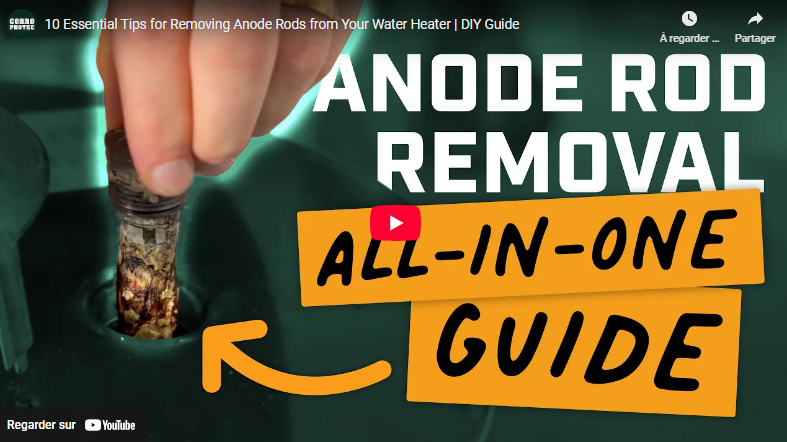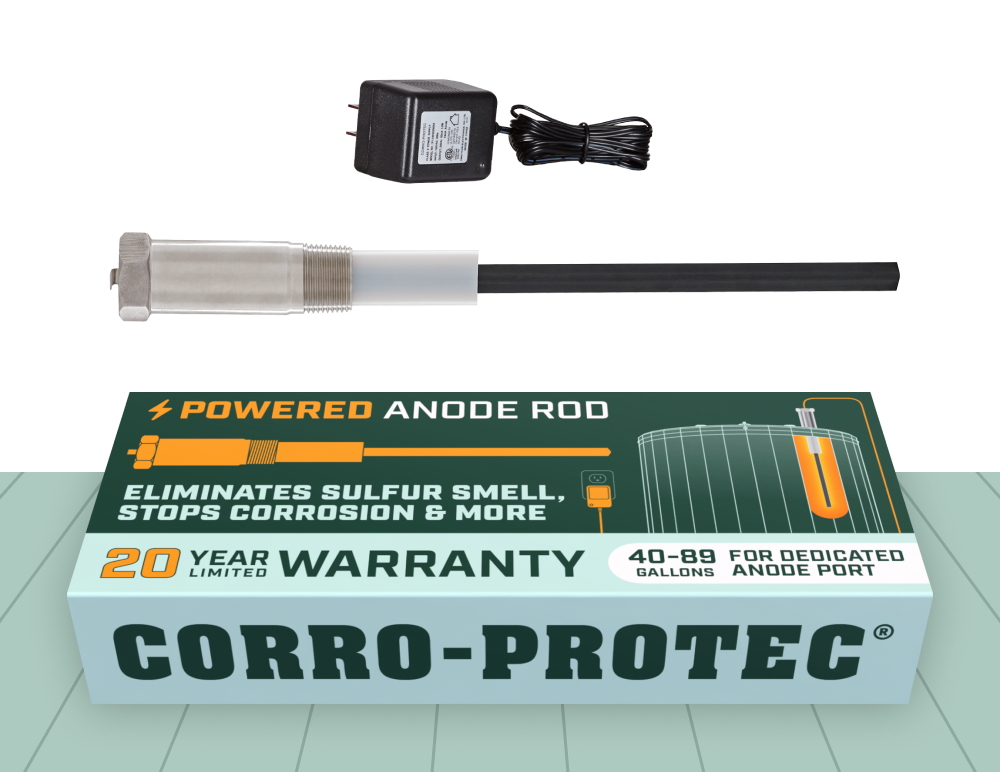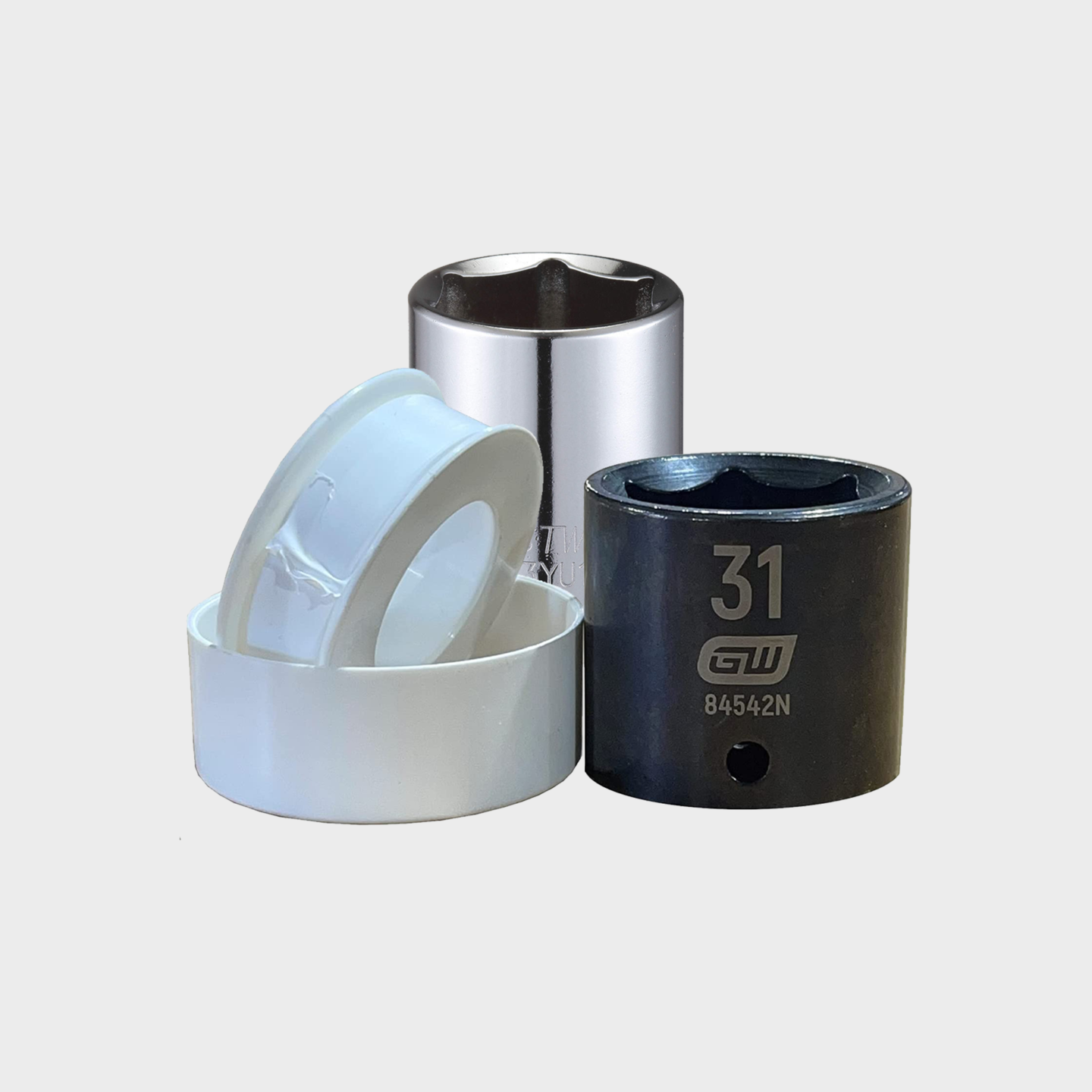State Water Heater Anode Rods: Location, Maintenance & Replacement

If you own a State* water heater, you already count on it for hot showers and clean dishes. But one hidden part, the anode rod, does most of the heavy lifting against rust and corrosion. Understanding its role and importance can make you more aware of its necessity. Learn what it is, where it lives, and whether a powered upgrade is a good idea. See why a powered anode rod can extend the life of any State model, from Select to ProLine™.
What Is an Anode Rod?
An anode rod is a metal shaft, usually magnesium, that threads into the top of your hot‑water tank. Its job is to corrode, so the tank walls don’t. For a deeper dive into the chemistry, see What Is an Anode Rod?
How It Works
Water, heat, and metal create rust inside your tank. The anode rod acts like a sacrificial bodyguard, attracting corrosive elements and saving the tank walls.
Why State Water Heaters Need Healthy Anodes
Glass‑lined interiors slow rust, but they’re not perfect. Once the anode rod is fully consumed, corrosion can begin, shortening the water heater’s lifespan, increasing the risk of rusty or smelly water, and leaving your system without any corrosion defense.
Without a working rod, even a premium State Select water heater can fail in as little as six years. Most State water heaters come standard with a CoreGuard™ anode rod, which is aluminum with a steel core.
Finding the Anode Rod
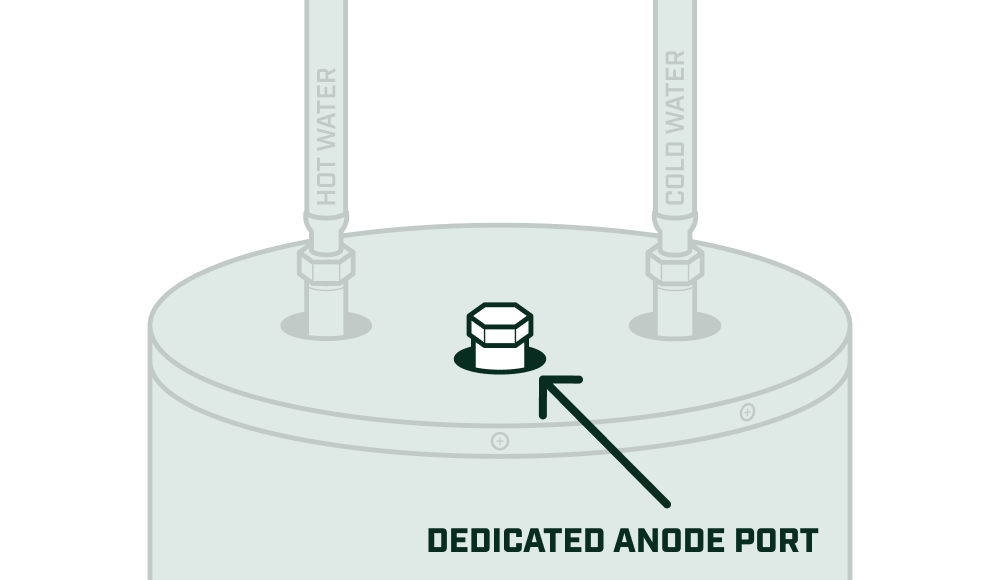
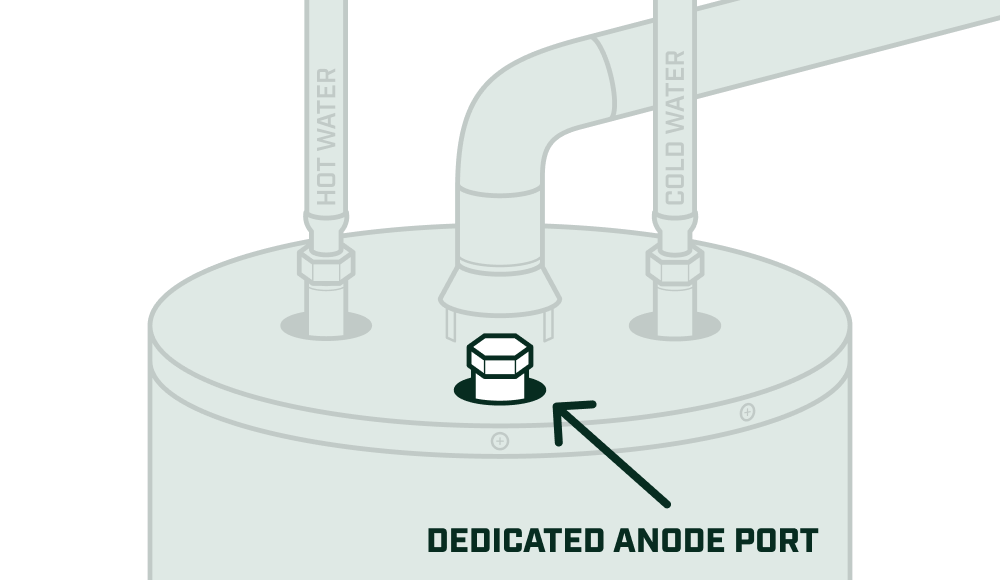
On most State units, the rod sits under a hex‑head plug on the top. For older models, it may share the hot‑water outlet. Consult your digital or printed water heater owner’s manual for easy guidance.
State Select water heater anode rod location: Look for a 1‑1/16‑inch hex nut near the center port.
ProLine Commercial‑Grade: The rod often doubles as the hot‑water nipple—check your manual.
Quick Tip
If you’re having trouble locating the anode rod, identify the name and model number of your State water heater and find the matching installation diagram online.
Types of Anode Rods for State Water Heaters
Regular maintenance is essential for maximizing the lifespan and efficiency of your water heater. Most State water heaters come stock with a CoreGuard aluminum anode rod, which typically dissolves within 4 to 6 years, depending on water quality.
Factors such as water hardness, the use of a water softener, or elevated chemical levels such as chlorine can accelerate this process.
| Powered Anode Rod | Magnesium Anode Rod | Aluminum Anode Rod(Zn-Alloy) | |
|---|---|---|---|
| Type | Titanium (Impressed-Current) | Sacrificial | Sacrificial |
| Typical Lifespan* | 25+ yrs | 1 to 3-5 yrs | 2 to 4-6 yrs |
| Lifetime Cost* | $159.99 | $199.99 to $999.99 | $209.99 to $599.99 |
| Typical Price* | $159.99 | $39.99 | $49.99 |
| Energy savings | Reduces energy bills by $40/year by preventing sediment buildup | Increase energy use due to sediment buildup | Increase energy use due to sediment buildup |
| Anode Rod Replacement |
Never |
Frequently |
Frenquently |
| Corrosion Protection |
Stops corrosion |
Failing to replace the anode rod before it’s depleted means water heater corrosion/failure will resume; regular inspection is key |
Lose their effectiveness over time. To ensure continued protection against corrosion, timely replacement is essential |
| Sulfur smell elimination | Eliminates & Prevents sulfur smell in hot water within 24 hours, no matter the cause | Can react with certain water types, producing an unpleasant sulfur smell in hot water | Can help reduce sulfur smell in hot water |
| Sediment Build-Up | Reduces sediment accumulation | Can cause sediment buildup in the tank when the anode is deteriorated | Can cause sediment buildup in the tank when the anode is deteriorated |
| Water Quality | Best for any water chemistry (soft or hard water) | Good for any water chemistry but will deteriorate more quickly in hard water | Good for any water chemistry but will deteriorate more quickly in hard water |
| Inspect | No anode rod inspection |
Hard/Well water: yearly Soft city water: every 2 yrs |
Hard/Well water: yearly Soft city water: every 2 yrs |
| Replace | No anode replacement. Controller sounds/LED alerts after ~20 yrs |
Anode rod replacement Hard/Well water: 2 to 3 yrs Soft city water: ~5 yrs |
Anode rod replacement Hard/Well water: 4 to 6 yrs Soft city water: ~5 yrs |
| Odor Notes | Ends odor completely in less than 24 hours | Can cause sulfur smell over time | Helps reduce smell, not always fully |
Flushing Your State Water Heater
| Water Quality | Flush Frequency | Why It Matters |
|---|---|---|
| All Water Types (Powered Anode Rod Installed) | As needed | Powered rods eliminate odors, do not create sediment; flushing maintains efficient heat transfer. |
| Hard / Well Water | Every 6 months | Removes heavy mineral scale and iron bacteria that can eat away at anodes and cause a rotten-egg odor. |
| Soft, Treated City Water | Annually | Clears light sediment, allowing the heater to run efficiently and facilitating anode inspection. |
When to Replace Your State Water Heater Anode Rod
Replace it when:
- More than 50 percent of the core metal is gone.
- The rod is coated with calcium that can’t be chipped off.
- You smell sulfur despite flushing the tank.
DIY Replacement
- Cut power or gas to the heater.
- Close the cold‑water inlet valve.
- Drain 1 foot from the drain valve to relieve the pressure.
- Use the socket and breaker bar to loosen the anode rod. (Tap gently with a rubber mallet if it’s stubborn.)
- Lift the rod straight up; watch for overhead clearance.
- Thread the new rod (or powered kit) in hand‑tight, then snug with the wrench.
- Open the cold‑water valve, bleed air from a hot tap, and restore power or gas.
Need visuals? Our installation guide guides you through each step with clear, step-by-step photos. You can also watch the following video if you prefer.
Why a Powered Anode Rod is Better than Standard Anode Rod
Instead of sacrificing its body, a powered anode rod uses a safe, low‑voltage current to protect the tank walls. Think of it as a permanent force field.
Key Benefits
1. Stops tank corrosion
2. Reduces limescale accumulation
3. Eliminates sulfur smell in hot water
4. Extends water heater life
5. Energy-Saving – read on
A standard magnesium anode rod costs $30 to $50 and needs to be swapped every one to five years. Over the life of your water heater, that’s between $199.99 to $999.99 plus plumber visits. In contrast, a powered rod costs the same upfront and pays you back in fewer leaks and with zero odor.
Plus, one powered anode rod covers the lifespan of multiple water heaters and can be easily transferred. Corro-Protec powered anodes can save up to $40 per year in the U.S. and $30 in Canada on electricity bills (water heating costs).
How to Install a Powered Anode in a State Water Heater
Installation is easy, and as long as you have teflon tape, a universal plier, ratchet wrench, Robertson screwdriver, 1 3/16” (31 mm) and 1 1/16” (27 mm) 6-point sockets, you can do it yourself! For detailed instructions on installing a powered anode rod, refer to our comprehensive guide.
Stop Replacing, Start Protecting
A healthy anode rod is the cheapest insurance for your State Water Heater. However, swapping in magnesium every few years is time-consuming and costly.
Upgrading to a powered anode rod stops rust, kills odors, and can extend tank life past the 15-year mark, often for less than you’d spend on two traditional replacements. Remember, if you have a tankless water heater, you don’t need an anode rod.
FAQ
The anode rod in your State water heater is located on top of your tank. When you are facing the front of your water heater, the sacrificial magnesium or aluminum anode is located at the back, between the cold and hot water connections. Refer to your water heater’s user guide for moreinformation.

Yes, powered rods also work in hybrid tanks.
No, the Corro-Protec powered anode rod does not void your State water heater warranty. In fact, State considers powered anode rods to be maintenance parts that support the proper functioning and longevity of the tank.
*State is a registered trademark of State Water Heaters. Corro-Protec is not affiliated with, endorsed by, or sponsored by State Water Heaters.
Blog
What is an Anode Rod?
You might have heard about an anode rod if you have a hot water heater. But what exactly is it, and why is it important? […]
Anode Rod Socket Size: Quick & Easy Guide
Anode rods are very important in all water heaters. They keep the water tank from rusting, so your heater can last longer. But, sacrificial anode […]
